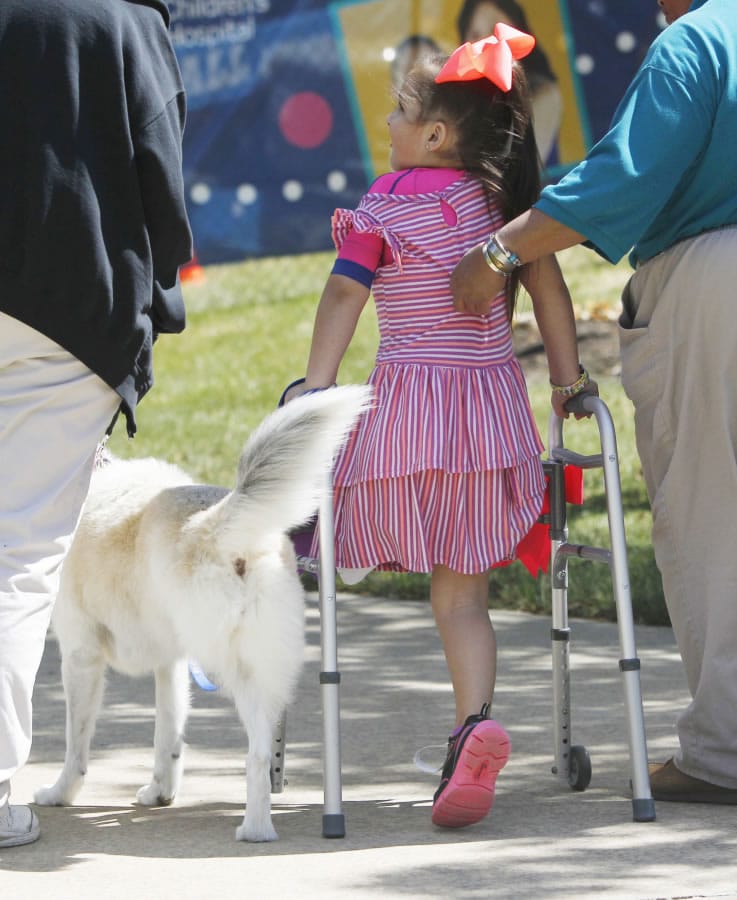AKRON, Ohio — Tessa Puma’s appearance is characterized by floppy bows and the color pink, but her tough mentality is more like that of her surname — courageous and strong in the face of adversity.
After contracting a severe infection from strep throat, the 6-year-old competitive dancer from Northfield, Ohio, is showing more courage than ever on her road to recovery.
In April, Tessa underwent more than a dozen surgeries, including a leg amputation from the knee down, when a rare infection caused by strep throat called necrotizing fasciitis spread throughout her body.
Tessa, who recently finished kindergarten at Nordonia’s Northfield Elementary School, is one in a million — literally. Necrotizing fasciitis occurs in one in a million children per year, and Tessa’s odds of beating it were slim. Tina Puma, Tessa’s mom, said doctors at Akron Children’s Hospital initially gave her a 20 percent chance of survival.
Fear of the unknown
When it was clear she’d survive, doctors told her mother that it would take about five surgeries to remove the infection.
It only took two.
“She’s completely beaten all odds of everything,” her mother said. “Everything she’s done is real quick. She’s an overachiever even with this stuff.”
Tessa’s recovery has moved quickly, but it was slow to start.
When she finally awoke from being heavily sedated in April, Tessa was missing part of her leg, and she’d received several skin grafts to cover other infected areas of her body, including her shoulder and arm.
Stretching out the grafts in her arm are the painful portions of Tessa’s therapy sessions, but the intimidating prospect of relearning to walk proved to be just as tear-inducing.
“A lot of it was fear of the unknown,” said Turranna Rice, a physical therapist at Akron Children’s Hospital.
The underdogs
It wasn’t until a three-legged, tail-wagging friend stopped by that Tessa found the courage she’d needed.
Rudy, a golden retriever with a prosthetic limb, is one of several disabled dogs that works with kids during therapy sessions as part of the hospital’s Doggie Brigade program.
At the beginning of Tessa’s first therapy session with Rudy, she was barely able to stand.
By the end of it, she had walked six laps around the room.
“Now, if she hears him or he hears her, they find each other,” said Julie Parton, Rudy’s trainer. “They really hit it off.”
Tessa’s therapy sessions now regularly include service animals. Many are disabled dogs, but even Petie the Pony makes a special trip to see her from time to time, donning his best pink harness.
“They’re so soft and cuddly,” Tessa said.
The animals are integrated into her therapy sessions to do everything from pushing her harder to comforting her during painful moments.
Above all, though, Parton said kids find comfort — and sometimes even inspiration — in animals who have similar disabilities.
In Rudy’s case, the 2-year-old dog was born with a shortened front leg. Parton said she loves to share the story of how vets said Rudy would never be able to swim.
“He swims straight as an arrow,” Parton said with a smile. “If someone tells you you can’t do something, tell them you know better.”
Dancing again
After three weeks of inpatient therapy followed by three weeks of outpatient therapy — both five days a week for more than six hours a day — Tessa is doing more than just walking with her walker.
She’s walking on uneven surfaces with it, swinging on it and even dancing with it.
“That’s her main goal right now is to get back to dance,” Tessa’s mom said. “She’s ready to go back, like, yesterday.”



